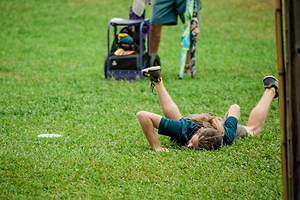Best Forehand Discs in Disc Golf
TOC
Table of Contents
Finding the best forehand discs is both a challenge and a necessity in disc golf. The forehand shot, a vital skill in the sport, can dramatically improve your game by unlocking new angles and opportunities. This guide is designed to recommend discs that cater to players of all skill levels, offering the top picks for mastering forehand throws. Delve into our recommendations to find the best forehand discs to complement your gameplay.
What is a Forehand
A forehand in disc golf, also known as a sidearm throw, is a throwing technique where the player holds the disc in the hand and flicks their wrist forward, releasing the disc to the side of their body. This method contrasts with the backhand throw, where the disc is released across the body’s front. The forehand throw is particularly useful for creating shots that need to curve to the right (for right-handed players) or to the left (for left-handed players), offering a strategic alternative for navigating obstacles and shaping flight paths on the course. Mastering the forehand throw can significantly enhance a player’s versatility and effectiveness in various playing conditions.
What Makes a Disc Good for the Forehand Shot
A good forehand disc tends to have many key characteristics that make it perfect for this shot type. Firstly, stability is paramount; a disc with the right balance between over-stability and under-stability can handle the high torque of forehand throws without veering off course. For players with powerful forehands, a more overstable disc is often preferred to resist turning over too quickly. Secondly, the disc’s rim width plays a critical role in grip comfort and release consistency, with many players finding discs with a moderate rim width to be easier to grip and throw accurately. Lastly, the weight of the disc also influences its suitability for forehand shots; a heavier disc can offer more control and wind resistance, making it a reliable choice for precision throws. Together, these factors contribute to a disc that not only suits the player’s throwing style and power but also enhances their ability to execute strategic shots on the course.
What a Forehand Disc Adds to Your Game
Adding a forehand throw to one’s disc golf arsenal significantly enhances versatility and strategic options on the course. It allows players to tackle obstacles and angles that are difficult or impossible with a backhand throw alone. The forehand is especially useful for shots that need to curve right (for right-handed players) or left (for left-handed players), providing a complementary flight path to the backhand. Mastering both forehand and backhand throws enables players to navigate any course layout more effectively, approach targets from different angles, and adapt to a wider range of situations, ultimately improving overall performance and reducing scores.
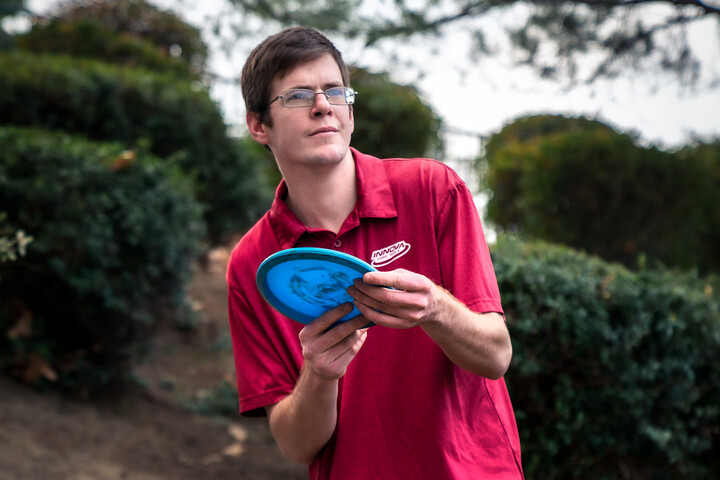
Things to Consider While Searching for the Best Forehand Discs
When searching for a forehand disc in disc golf, there are several factors to consider to find a disc that suits your playing style and maximizes your performance. Here’s a list of key considerations:
- Disc Stability: Stability is a crucial factor. Overstable discs are often recommended for forehand throws because they can handle the high torque and speed that come with this throwing style. Overstable discs tend to have a predictable fade, making them reliable under various conditions.
- Rim Width: The rim width can significantly affect grip and comfort, especially for forehand throws. Players with smaller hands may prefer discs with narrower rims, while those with larger hands might find wider rims more comfortable. A proper grip is essential for control and power in forehand throws.
- Plastic Type: The material of the disc can impact its grip, durability, and flight characteristics. Some plastics offer better grip, especially in wet conditions, which can be beneficial for forehand throws. Others are more durable and can withstand the wear and tear of hitting trees and other obstacles.
- Disc Weight: Heavier discs tend to be more wind-resistant and offer more stability, which can be beneficial for forehand throws. However, lighter discs might be easier to throw for beginners or those with less arm speed, offering greater distance with less effort.
- Skill Level: Your experience and skill level can influence the best disc choice. Beginners might prefer discs that are less overstable and lighter, making them easier to throw until they develop their technique. More experienced players might opt for heavier and more overstable discs for precision and control in various conditions.
- Flight Numbers: Pay attention to the disc’s flight numbers (speed, glide, turn, and fade). For forehand throws, a disc with a higher speed, moderate to low glide, low turn, and higher fade can often offer the control and stability needed.
- Personal Preference: Ultimately, the right disc also comes down to personal preference and what feels best in your hand. It might take experimenting with different discs to find the one that suits your forehand style the best.
Consider these factors in combination to choose a disc that will complement your forehand throw. It may take some trial and error to find the perfect disc, but understanding these aspects will help you make a more informed decision.
Understanding Flight Numbers
When choosing a forehand disc that suits you, you will want to understand flight numbers. Discs are often categorized by a four-number rating system that describes their flight characteristics, commonly know as flight ratings. This system helps players understand how a disc is expected to behave in the air. Here’s a brief explanation of each number:
- Speed: The first number represents the speed of the disc, which indicates how quickly a disc can travel through the air. Speed ratings range from 1 to 14. Higher numbers require more power to throw effectively. Speed is not just about how fast a disc can go but also reflects how much arm speed and power are needed for the disc to perform as intended.
- Glide: The second number is for glide, ranging from 1 to 7. Glide describes how long a disc can stay in the air. A disc with a higher glide rating is able to stay airborne longer, potentially covering more distance. Glide can be beneficial for achieving maximum distance but might be more challenging to control in windy conditions.
- Turn: The third number, ranging from +1 to -5, indicates the disc’s tendency to turn to the right during the initial part of the flight (for a right-handed, backhand throw). A positive number means a disc is more resistant to turning, while a negative number indicates a tendency to turn. A disc with a lower turn rating (more negative) is easier to throw for distance for players with less power.
- Fade: The fourth and final number, ranging from 0 to 5, measures the disc’s tendency to hook or fade left at the end of its flight (for a right-handed, backhand throw). A higher fade rating means a stronger leftward finish as the disc slows down. Discs with higher fade are often used for their predictability and ability to fight the wind.
Understanding these numbers helps players select discs that match their throwing style, power, and the specific needs of different shots on the course. It’s important to note that actual flight paths can vary based on throwing technique, arm speed, and environmental conditions.
Understanding your skill level
When preparing to choose your discs, considering your skill level is crucial to ensure you get discs that match your current abilities and support your ability develop your skills. Different discs are designed with varying flight characteristics, which can greatly influence your performance on the course. Here’s a guide to choosing discs based on your disc golf skill level, followed by a breakdown of skill levels and corresponding distances:
Choosing Discs Based on Skill Level
- Beginners: Should focus on lightweight, understable discs that are easier to throw and control. These discs are more forgiving of errors and require less power to achieve a straight flight, making them ideal for learning the fundamentals.
- Intermediate Players: Can start incorporating more stable discs into their bag, which offer a balance between distance and accuracy. At this level, experimenting with different types of discs (drivers, mid-ranges, and putters) helps refine techniques and shot selection.
- Advanced Players: Often benefit from a mix of stable and overstable discs, allowing for more precise shot shaping and control in various wind conditions. Advanced players have the technique and power to handle discs that require more speed to fly correctly.
- Professionals: Use a wide range of discs, including highly overstable models, to navigate complex courses and execute highly specific shots. Professionals select discs that complement their high skill level, focusing on maximizing performance in competition.
Disc Golf Skill Levels and Corresponding Distances
- Beginner Distance: Up to 200 feet (60 meters). Beginners should aim for discs that maximize their distance without sacrificing too much control.
- Intermediate Distance: 200 to 350 feet (60 to 106 meters). Intermediate players benefit from discs that offer a blend of distance and accuracy, as their improved technique allows for greater control.
- Advanced:
- Distance: 350 to 450 feet (106 to 137 meters). Advanced players can handle discs that require more power and offer less forgiveness, allowing for precise shot shaping and longer drives.
- Professional:
- Distance: Over 450 feet (137 meters). Professionals need discs that can cover large distances with predictability and control, suitable for the highest levels of play.
Understanding your skill level and the distances you are capable of achieving helps in selecting the right discs to enhance your game.

Our Best Forehand Discs
Now with all that out of the way, we will dive into our top recommendations for forehand discs. We will break these picks down by disc types so that you can fill any of the wholes you may have in your bag. We will also add a few extra picks for specific situations and player levels. Lets dive into it!
Popular Pick
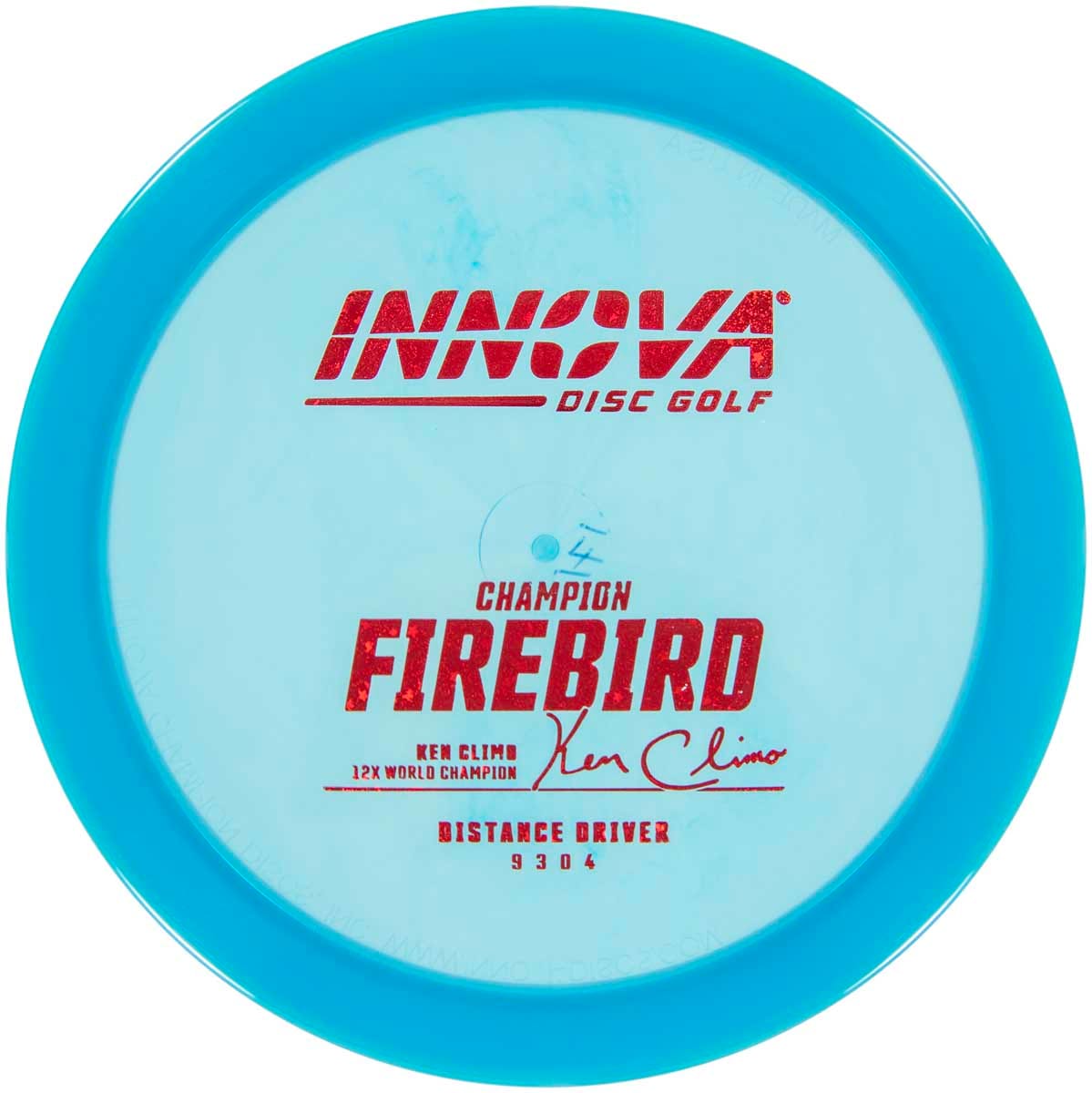
Firebird ( 9 / 3 / 0 / 4)
The Innova Firebird stands out as an exceptional choice for forehand throws due to its reliable overstable flight characteristics. Its reputation for consistency in high wind conditions and its ability to handle the power behind forehand shots make it a favorite among players looking for precision and control. The Firebird’s substantial fade is ideal for navigating tight corners or executing shots that require a predictable left-to-right movement (for right-handed throwers). Moreover, its durable plastic options ensure that it maintains its flight characteristics over time, making it a dependable disc in any player’s arsenal for achieving accurate, controlled forehand throws.
Best Distance Driver for Forehand Throws
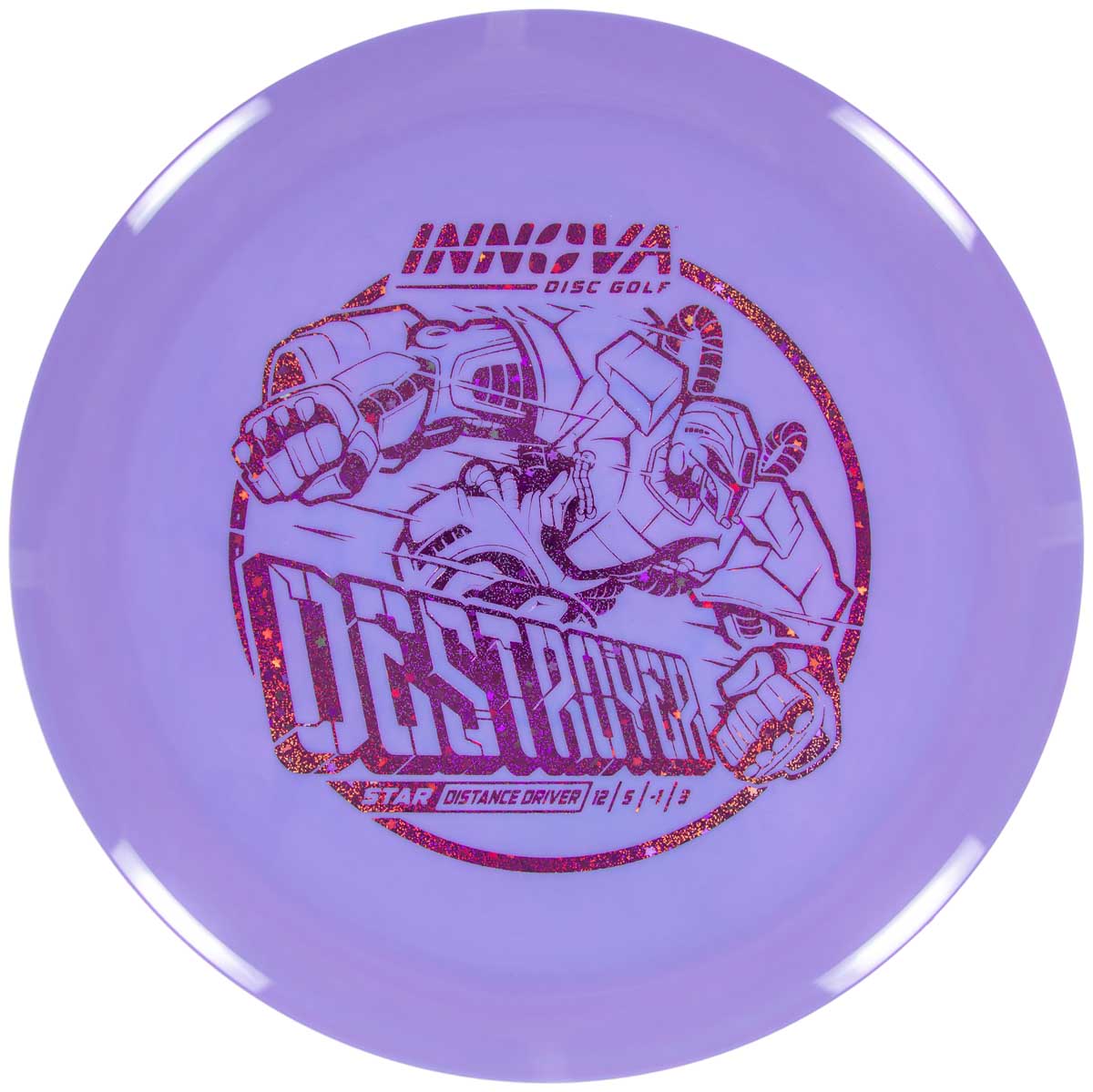
Destroyer ( 12 / 5 / -1 / 3)
The Innova Destroyer is an excellent choice for forehand shots due to its combination of high-speed capability and stability. Its design allows for significant distance with a reliable fade at the end of the flight, making it particularly effective for players with a strong forehand throw. The Destroyer’s stability means it can handle the high torque often associated with forehand throws without turning over too easily. This predictability, along with its ability to cut through the wind, makes it a go-to disc for forehand players looking for consistent performance under a variety of conditions. Additionally, its wide rim provides a comfortable grip for the sidearm thrower, further enhancing its suitability for powerful forehand shots.
Low Power Alternative: Sidewinder (9 / 5 / -4 / 1)
The Innova Sidewinder, is excellent for players with low arm power seeking distance. Its high glide and significant understability allow for easy-to-achieve, long, sweeping flights. Perfect for new players, it helps develop sidearm skills by enhancing control and maximizing distance without the need for high speed, making it a dependable choice for improving your sidearm game.
Best Fairway Driver for Forehand Throws
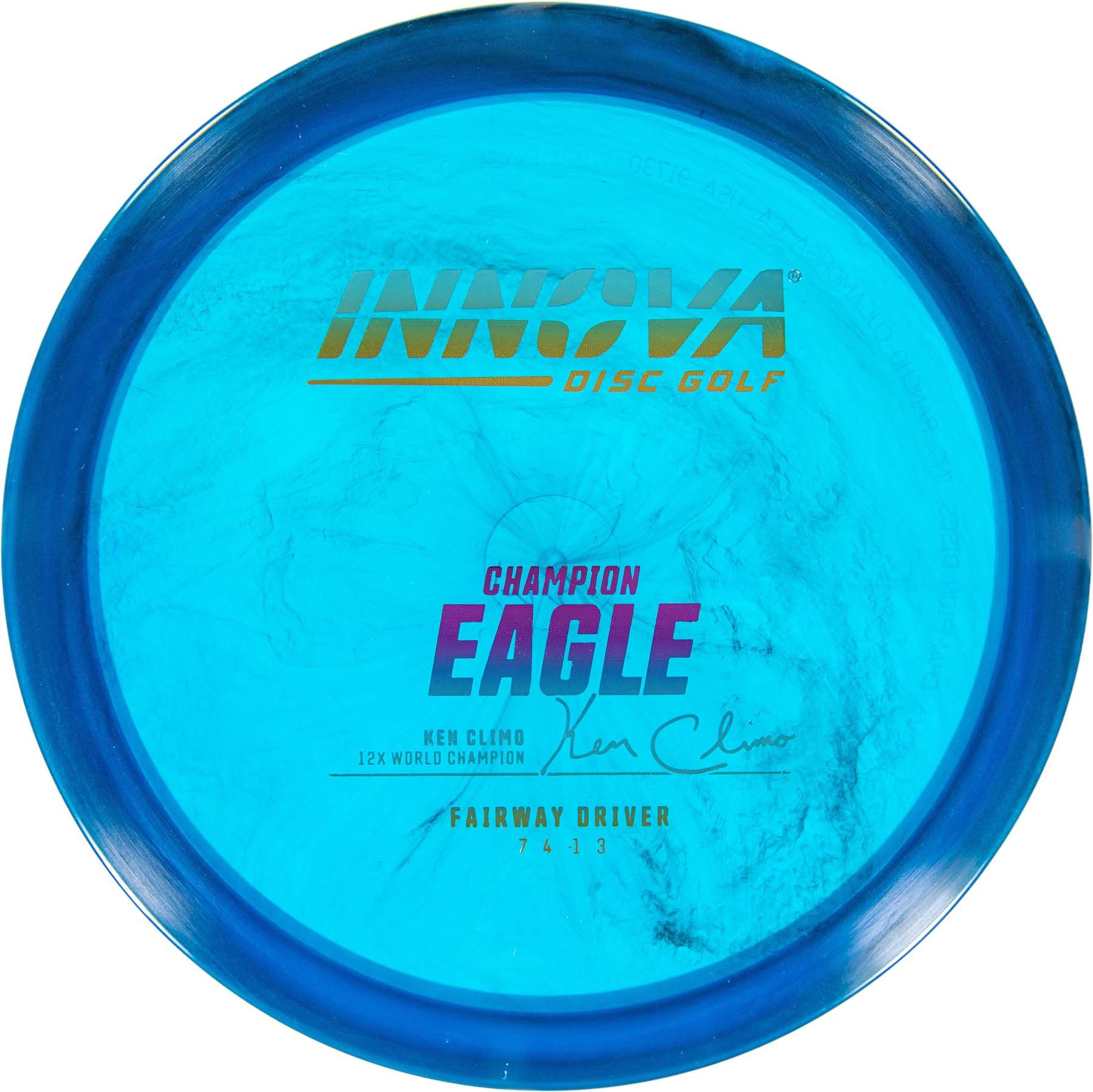
Eagle (7 /4 / -1 / 3)
The Innova Eagle is a versatile forehand disc due to its combination of speed, stability, and control. It offers a balance between manageable speed for precision and enough fade for reliable finishes. Its slight turn allows for shaping shots, making the Eagle great for players looking to navigate tight lines or achieve consistent, controlled forehand throws. This disc is ideal for those seeking a dependable driver that performs well in a variety of conditions.
Low Power Alternative: Teebird (7 / 5 / 0 / 2)
The Innova TeeBird, is an excellent choice for forehand players with low power due to its straight flight path and moderate fade. Its stability allows for predictable flights without excessive turn, making it easier to control and accurate for precise shots. The TeeBird’s balance of speed and glide ensures that players can achieve consistent distances, even without high power, enhancing control and confidence in their sidearm game.
Best Mid – Ranges for Forehand Throws
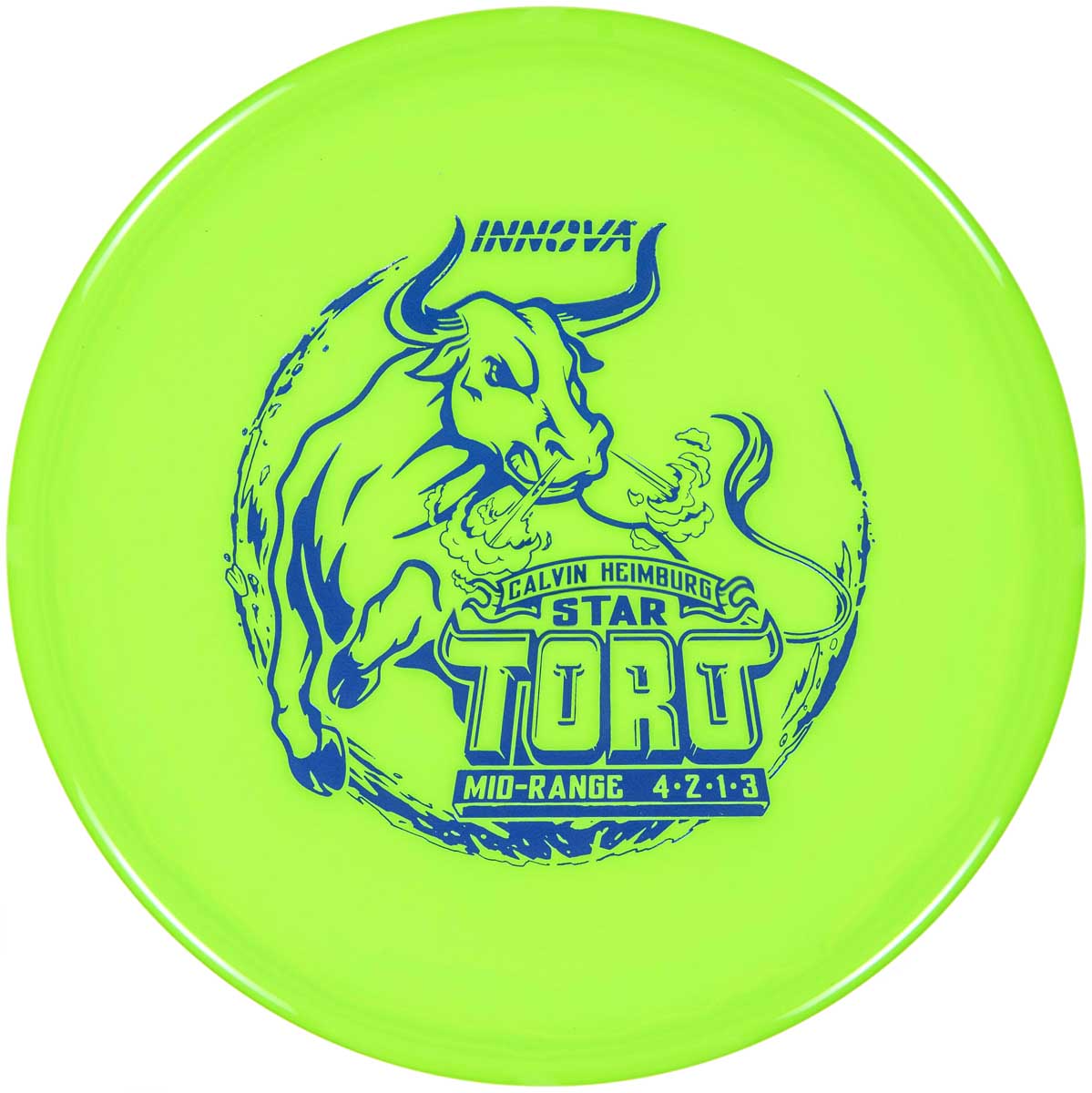
Toro (4 / 2 / 1/ 3)
The Innova Toro is considered a solid forehand midrange disc due to its design for control and reliability in tight situations. Although specific flight numbers were not provided, discs like the Toro typically feature a combination of stability and a comfortable grip that suits forehand throws. Its stability helps it resist turning over on powerful throws, while still allowing for a predictable fade. This makes it excellent for navigating through obstacles and executing precise upshots, making the Toro a go-to choice for players looking to enhance their forehand game with a midrange disc.
Low Power Alternative: Rat (4 / 2 / 0 / 3)
The Innova Rat, is a solid choice for low power forehand players due to its manageable speed and substantial fade. Its minimal glide and neutral turn ensure controlled, precise approaches, allowing players to execute accurate forehand shots with less effort. The predictable fade makes the Rat ideal for navigating tight spaces and landing close to targets, enhancing play on technical courses where precision is key.
Best Putt & Approach Discs for Forehand Throws
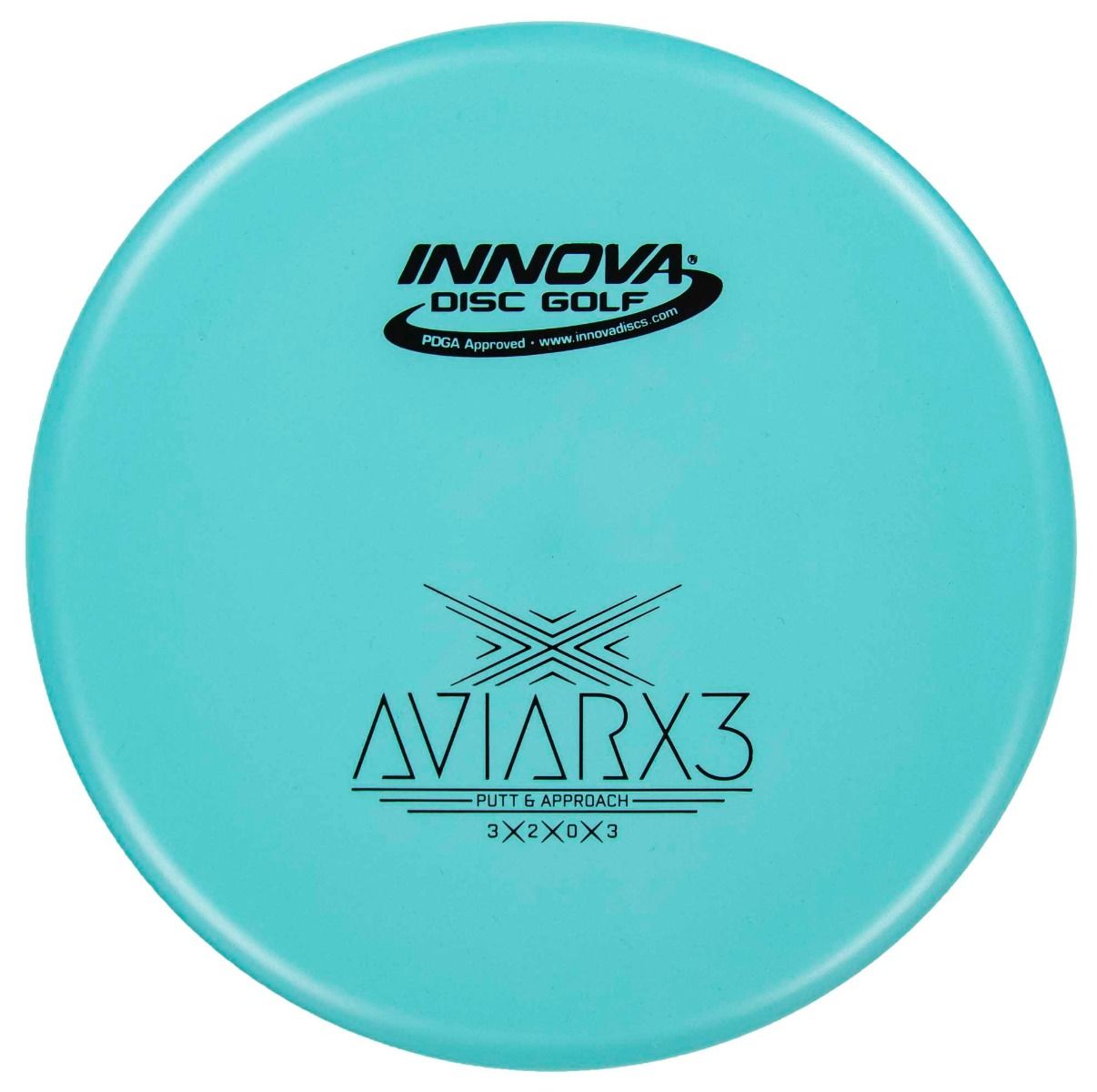
Aviarx3 (3 / 2 / 0 / 3)
The AviarX3 is a favorite among sidearm players looking for a dependable approach disc. Its overstable flight characteristics ensure it can handle the torque and speed of forehand throws without losing its intended flight path. The AviarX3’s design allows for tight, controlled approaches, making it ideal for navigating obstacles and landing close to the basket. Its consistent fade and resistance to turning over, even in windy conditions, make it a reliable choice for precise upshots and short drives with a sidearm throw.
Low Power Alternative: Invader (3 / 2 / 0 /1)
The Innova Invader, stands out as a solid low power forehand option due to its low speed and minimal fade, enabling precise and controlled upshots. Its stability and gentle glide are perfect for players seeking accuracy over distance, allowing for consistent, straight flights with a reliable finish. This makes the Invader an excellent choice for beginners or those refining their forehand approach game, ensuring accuracy even with limited power.
Utility Option
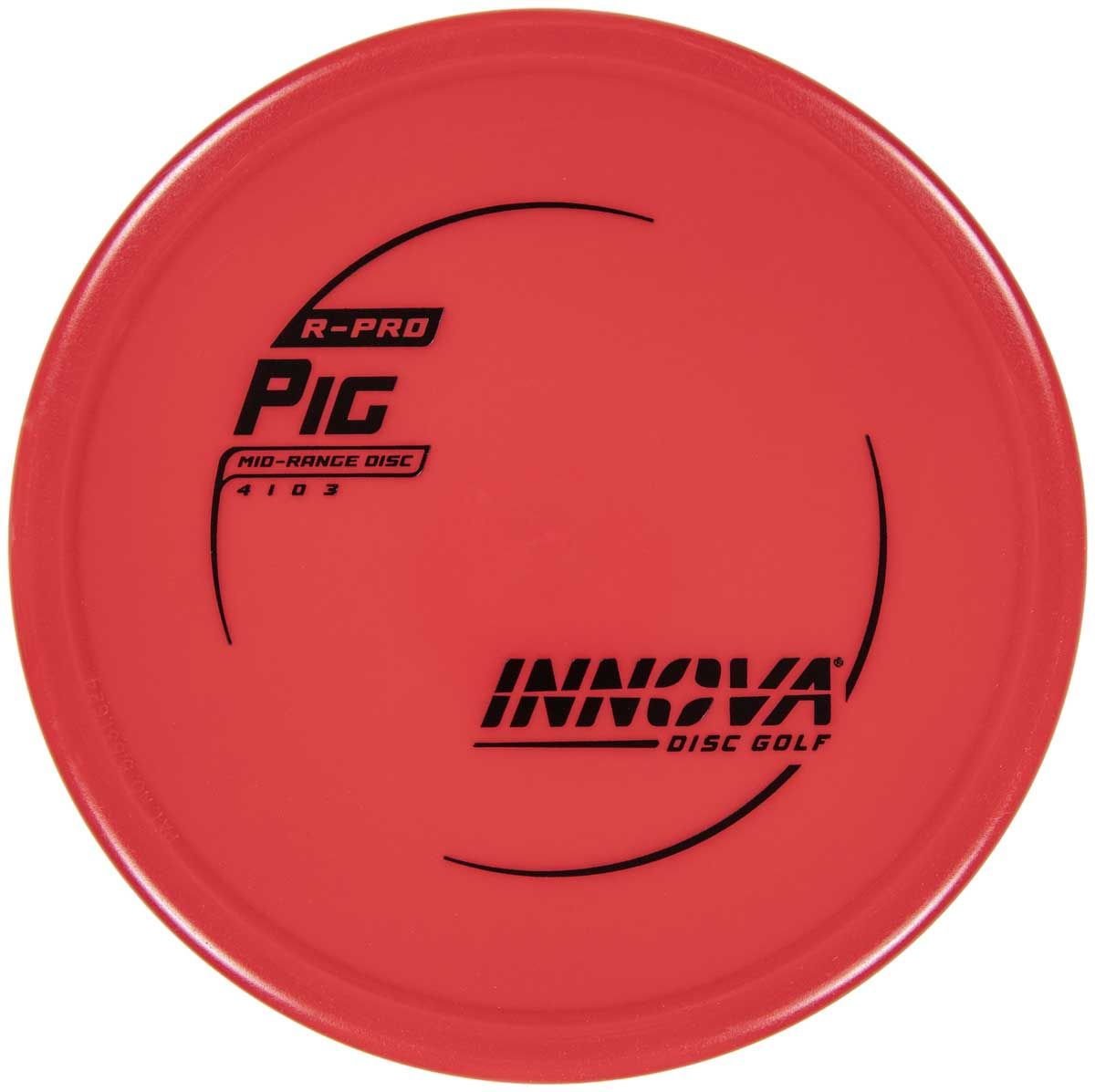
Pig (4 / 1 / 0 / 3)
The Innova Pig excels as a utility disc due to its overstable flight, making it reliable under windy conditions and for high-speed forehand throws. Its grippy and comfortable rim ensures precise control, ideal for forehand players needing dependable, accurate approaches or tricky placements. This combination of stability and grip makes the Pig a versatile choice for challenging shots.
These selections represent our top recommendations for various forehand disc types. The forehand shot is undeniably crucial in disc golf. Equipped with these picks, you’re now ready to build a formidable forehand arsenal, so that you can take your game to new heights!
Frequently Asked Questions
What Disc Should I Use for Forehand?
When it comes to your Forehand throw the best disc depends on your skill level and preferences. Generally, low-profile, overstable discs are advised. Good choices include Innova’s Firebird, Toro, and AviarX3. Explore these options to find the ideal disc for your game.
What Type of Disc is Easiest to Throw a Forehand with?
The easiest disc to throw a forehand with is an understable, light-weight, and low-profile disc. These discs require less power, offer more control, and are forgiving of throwing errors. They allow beginners to achieve straighter and longer shots with less effort, making them ideal for developing a consistent forehand throw.
Why Are Overstable Discs Better for More Experienced Players?
Overstable discs are better for experienced players because they offer greater predictability and control. They resist turning during high-power throws and provide reliable fade at the end. Skilled players can manipulate their flight paths, making overstable discs valuable for specific shot shaping and windy conditions.
Is the Innova Destroyer a Good Forehand Disc?
Yes, the Innova Destroyer is considered one of the best distance drivers for experienced players who prefer throwing forehands due to its high-speed, stability, and reliable fade characteristics. It is also a favorite disc among many Professional Players in the disc golf field.
Personalized Disc Recommendations
Just answer a few questions and we’ll send you personalized recommendations within 24 hours.
GET PRO TIPS
